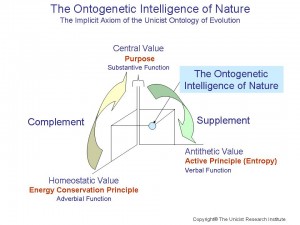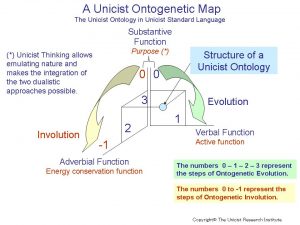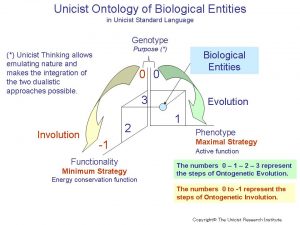The basics of the Unicist Logical Approach to Complexity
Homology between the unicist ontological structure, the atomic structure and biology
Introduction
The objective of this synthesis is to provide the framework of the consistency between the unicist ontological approach and hard sciences to demonstrate not only that they are compatible but also their homology.
 After the unicist ontology has been apprehended, it becomes evident that its structure is homologous to the structure of atoms and biology.
After the unicist ontology has been apprehended, it becomes evident that its structure is homologous to the structure of atoms and biology.
This homology allows dealing with the nature of the complex aspects of all sciences using the same unicist ontological structure defined by the ontogenetic maps to define the concept of what is needed to develop with a fully reliable approach.
Engineering, electronics, information technology, behavioral sciences, anthropology and architecture among other application fields need to use the unicist ontological structure and the corresponding ontogenetic maps in order to be apprehended in their nature. Without them concepts are just ideas and not concrete structures to be followed.
Synthesis
The ontogenetic intelligence of nature defines that every living being has a purpose, an active principle and an energy conservation principle.
Learn more at:
http://www.unicist.com/books-pages/en/wp_ontogenetic_intelligence_en6s.php
The purpose can also be defined as the substantive function, the active principle as the verbal function and the energy conservation principle as the adverbial function.
 In physics atoms are defined by having a central nucleus, composed by positively charged protons and neutral neutrons, surrounded by negatively charged electrons.
In physics atoms are defined by having a central nucleus, composed by positively charged protons and neutral neutrons, surrounded by negatively charged electrons.
The positively charged protons are homologous to the substantive function, the neutral neutrons are homologous to the adverbial function and the negatively charged electrons are homologous to the verbal function. An atom, having an equal number of protons and electrons, is electrically neutral.
 Living beings are continuously evolving and involving which implies that there is always disequilibrium between their purposes and their active functions which is homologous to the disequilibrium of protons and electrons.
Living beings are continuously evolving and involving which implies that there is always disequilibrium between their purposes and their active functions which is homologous to the disequilibrium of protons and electrons.
This disequilibrium is what defines the energy and the influence of an ontogenetic structure in the environment.
The active function and the purpose are antithetic and supplementary implying that both are charged with energy.
The energy conservation function and the purpose have a complementary relationship which is evident in atoms where the neutrons allow the integration of the protons.
The mass of an element is basically given by the nucleus of an ontological structure meaning that the mass is given by the purpose and its complementary energy conservation function. But the evolution of a living being is given by the power of the active function in the environment.
The Unicist Ontology of Biological Entities
The unicist ontology of a “biological entity” defines its structure and functionality in an environment.
 The genotype defines the genetic structure of the entity that rules its evolution and generates the phenotype of the being. The objective of the genotype is to ensure the permanence of species, its reproduction and production.
The genotype defines the genetic structure of the entity that rules its evolution and generates the phenotype of the being. The objective of the genotype is to ensure the permanence of species, its reproduction and production.
The phenotype defines the morphologic, behavioral and materialistic characteristics of the entity.
It defines the functional characteristics, the functional power of the entity and the functional assurance.
Functionality defines the effectiveness of the phenotype measured as the consequence of the adaptation of the biological entity to the environment.
Functionality is measured in the capacity of adapting and growing on the one hand, and surviving, on the other hand.
The understanding of the ontology of “biological entities” helps to follow the laws of nature when dealing with genetic engineering processes and use it to apprehend the nature of beings with “artificial life” such as institutions.
Conclusion
This homology is just a demonstration that beginning with physics, continuing with biology and ending with human behavior the essential structures of these fields are necessarily compatible and homologous.
Peter Belohlavek
NOTE: The Unicist Research Institute was the pioneer in complexity science research and became a private global decentralized leading research organization in the field of human adaptive systems. http://www.unicist.org